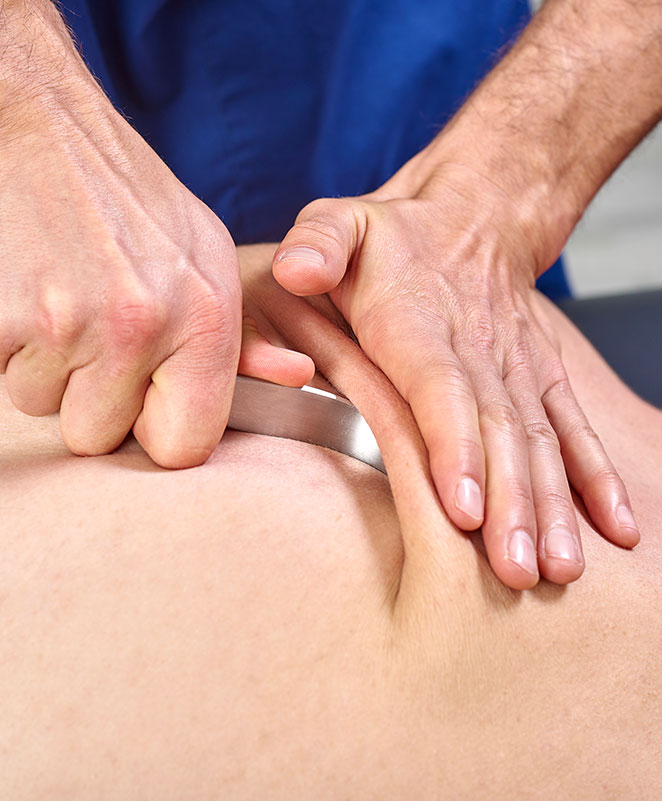Instrument-Assisted Soft Tissue Mobilization (IASTM) and Graston
At your first appointment, your Physical Therapist will perform a thorough evaluation and develop a personalized rehabilitation treatment program with you that may include IASTM and Graston Therapy.
What is Instrument-Assisted Soft Tissue Mobilization (IASTM)?
Instrument-assisted soft tissue mobilization (IASTM) is an effective manual therapy treatment to help relieve pain from soft-tissue injuries. Physical therapists use specially designed tools to help remodel scar tissue, increase range of motion and decrease pain. There are multiple types of IASTM products including ASTYM, Hawkgrips and Graston Technique. Despite their differences, each technique is designed to improve blood flow and scar tissue mobility, decrease muscle spasms and improve healing.

Our Specialty
Benefits of IASTM
A trained clinician will use a specially designed tool to help assist with treatment over areas within the muscle, tendon or scar tissue. This type of treatment will enhance healing and help improving the flow of fluid in and around the pain area. Patients can expect improvement of function after one to four treatments.
Patients with a wide variety of symptoms related to chronic pain, muscle spasm or scar tissue buildup may benefit from IASTM.
Common Diagnosis Treated With IASTM are:
- Painful scars
- Tennis elbow
- Runners knee (patellar tendonitis)
- Golfers elbow
- IT band syndrome
- Other tendonitis or tendinosis
- Shin splints
- Carpal Tunnel syndrome
- Fibromyalgia
- Low back and neck pain
- Joint sprain
- Plantar fasciitis
- Post-fracture pain
- De quervains syndrome
What Is the First Step?
Start By Scheduling an Evaluation Appointment.
Don't Wait - Get Started Right Now!
Clinical research shows that the sooner you get started with active rehabilitation, the less likely you will need unnecessary tests, medications, or surgery.
At your evaluation appointment, you will meet with a physical therapist who will perform a thorough evaluation that includes:
- A review of your health history and your specific symptoms.
- A thorough examination that includes assessing the quality and quantity of your movements, and any factors that might put you at risk for delayed recovery or might indicate a serious health problem.
- Assessment of how you use your body at work, at home, during sports, and at leisure.
- Determination of the diagnosis and impairments that are causing your pain and establishment of a treatment plan of care.
Reviews
What Our Clients Say
Excellent physical therapy practice. The therapists there know what they are doing, and they truly care about their patients!


